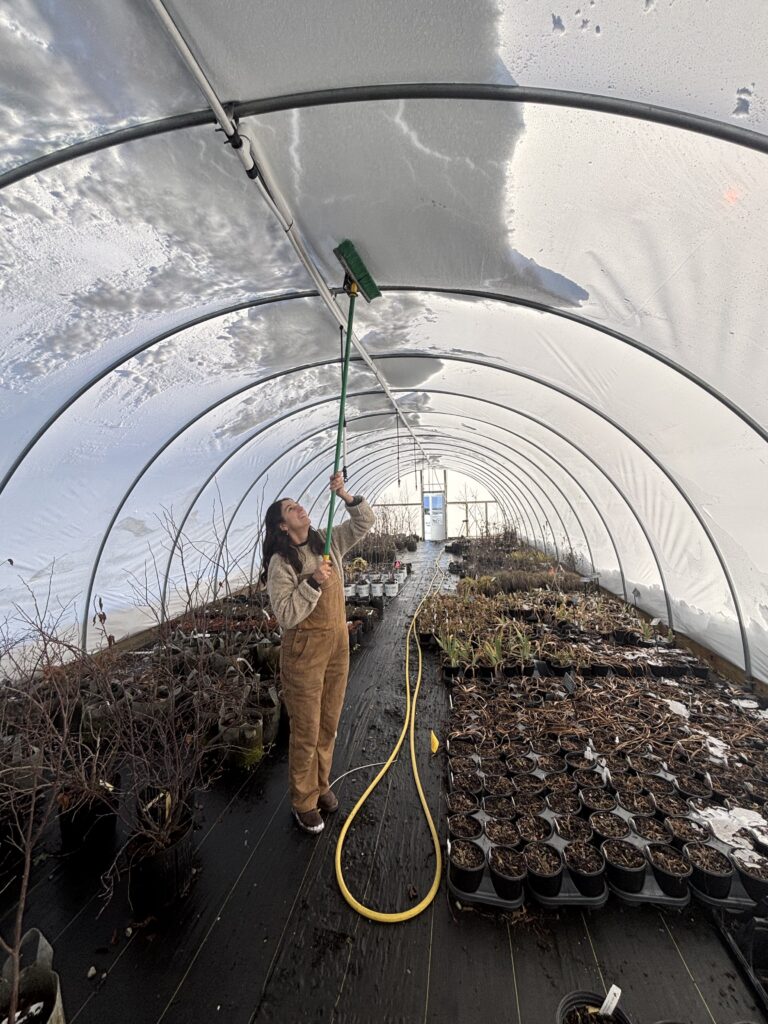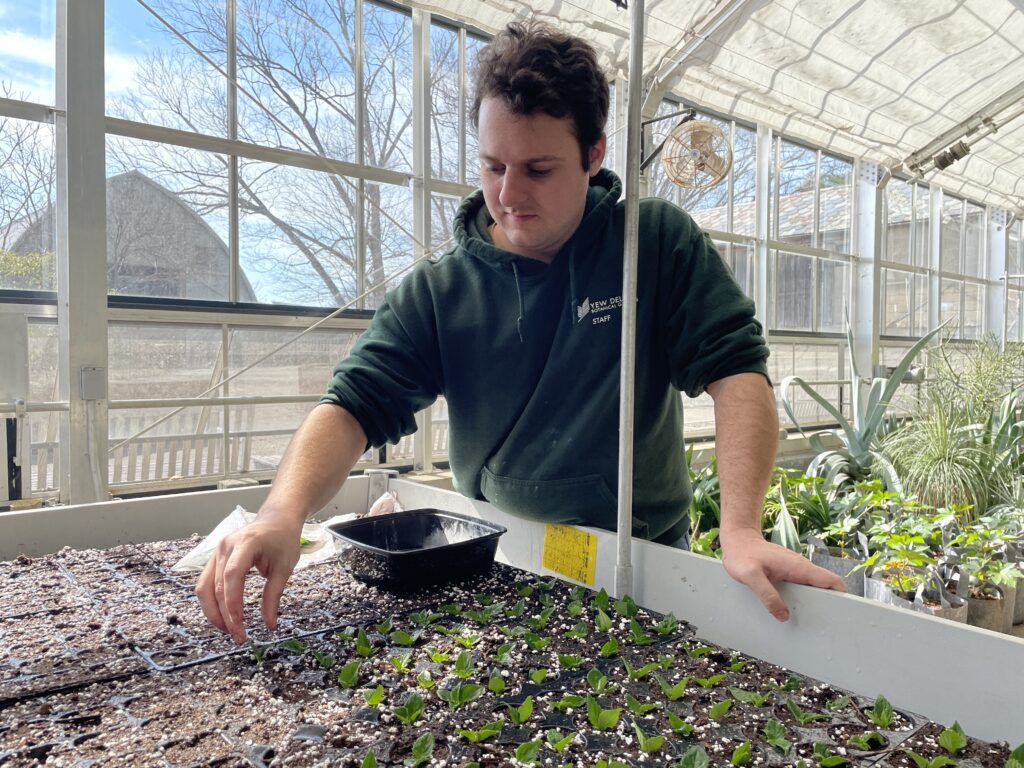One may think that the Nursery at Yew Dell Botanical Gardens simply shuts down during the winter; plant sales are offline, little to grow for the gardens, no new plugs incoming to pot up, etc. But the dormant season is a deceptively difficult time for plant care and requires vigilance.
Environmental Control Varies
How we care for our plants really depends on the environmental controls, or lack of, in each greenhouse.
We have two hoop houses that are covered in white plastic with no heating system. The plastic mostly serves to buffer against intense winter winds which can be just as damaging to plants as the cold itself and blocks out a substantial amount of sunlight to prevent heat building up on sunny days. Additionally, the plastic blocks snowfall and ice, which allows for us to access the plants and observe them. Potted plants in these hoop houses will easily get below freezing if those are the outdoor conditions, so we do our best not to overwinter sensitive or marginally-hardy perennials in these hoops. And when it does snow/ice, like it did earlier this month, we have to be prepared to use wide brooms to push the excessive amounts of snowfall off from the inside. If we neglect to notice and address this issue, the weight of snow could easily collapse the steel frame, creating an absolute disaster. In these unheated hoops, the soil of the pots remains consistently cold and does not require much watering at all. Overwatering could easily cause root rot since the plants are not currently photosynthesizing and uptaking water from the roots. The difficult part of this equation, though, is that potted plants with saturated soil have a much greater buffering capacity against freezing than does dry soil. So prior to days when the lows will be well below freezing, we thoroughly soak the nursery stock if needed. Winter really can be mentally grueling! A lot of the decisions about watering may be rather subjective, but they are made by constant, ongoing observations.
The Greenhouse Effect
Next up we have House 1, our greenhouse covered in plastic and the existing shade cloth that is environmentally controlled, but is by no means advanced. Several sensors in this greenhouse are set at temperature ranges that control the mounted, natural gas powered heaters, exhaust fans, and vents. You may assume during temperatures in the 30s that we are doing everything we can to keep those heaters running, but the greenhouse effect is very powerful. A sunny day in the high 30s can actually create conditions inside that are in the 70s, even 80s if outside is in the 30s. This may seem ideal; why wouldn’t we want a nice temperate environment for our plants? Well, although we want to keep most of our potted plants from experiencing freezing temperatures, we still would like them to enter their natural state of dormancy and stay there until late winter. To “die back” in other terms. Some species have evergreen foliage like hellebores and certain ferns, but most of our plants should shed their leaves, having sent energy back down to the root system. If we had glasshouse-like conditions for all of our plants, the comfortable conditions can trick them into holding onto or creating new foliage, expending energy at a time when they should be storing it for spring.
Our newest greenhouse has by far the most advanced environmental controls, with large mounted heaters, ridgeline and side ventilation, multiple temperature probes, anemometer (measures wind speed and pressure), and a boiler for the heated-water tubing system on the ground. Mounted computers control all of these factors based on our preset range specifications. This greenhouse gives us far more flexibility to start plants earlier. The thousands of annuals and edibles we grow will be able to thrive with the help of bottom heating in this greenhouse. There are 3 distinct zones for the bottom heating, allowing us to really help those young plants that are still establishing a root system, while dialing it back for more mature perennials that are coming out of dormancy.
Hidden Hustle
Winter can be deceptive. Similar to a plant during dormancy, the nursery may appear quiet and slow. But as many gardeners know- this is a crucial time for survival for the plant (and our nursery staff!) to prepare for the next growing season. We may not be watering three times a day or frantically propagating plants, but there is plenty to do in the nursery during the dead of winter.

Jeff Margreiter
Nursery & Greenhouse Manager



